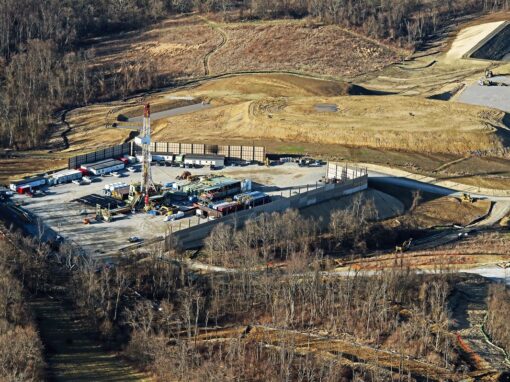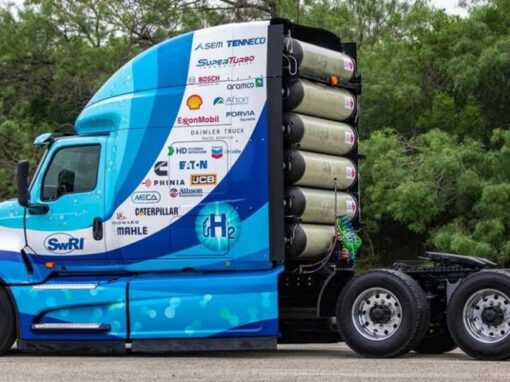By Charlie Sabgir
Bold action from the public and private sectors is needed to drive the energy transition: carbon capture, utilization, and storage (CCUS) must play a crucial role in this effort. CCUS—the process of capturing carbon dioxide (CO₂) from power stations, industrial facilities, or the air; transporting it by ship or pipeline; and either storing it or using it as a feedstock for products or services—will help decarbonize existing and future emissions sources. This approach is valuable across industries but especially in hard-to-abate sectors like chemicals and cement, where it could mitigate 38% and 17% of total emissions, respectively.
The Department of Energy (DOE) estimates that the U.S. must capture 400-1,800 million tons of CO2 annually to meet its 2050 climate targets. However, current carbon capture capacity is roughly 20 million tons per annum, just 1-5% of what may be necessary. This gap presents a significant challenge and a substantial opportunity, with potential investments reaching $100 billion by 2030 and $600 billion by 2050. Nonetheless, conventional carbon capture processes remain expensive, energy-intensive, and slowed by regulatory uncertainty. This poses a challenge to the economic viability and scalability of these technologies.
Fuel cells offer a promising alternative to these traditional carbon capture methods, allowing power plants to reduce emissions with increased energy efficiency. FCHEA members are at the forefront of this innovation, developing transformative technologies to bolster CCUS capabilities. Current policies and incentives support these efforts–including the 45Q tax credit for carbon sequestration, the 45V hydrogen production tax credit, the 45Z clean fuel production credit, and investments from DOE’s Office of Fossil Energy and Carbon Management (FECM). However, realizing CCUS’s full potential will require sustained incentives and a supportive policy environment.
FuelCell Energy (FCE) has developed a carbonate fuel cell that captures CO2 from power plants or industrial facilities while simultaneously generating power. Its system directs flue gas into the fuel cell’s cathode, where the carbon dioxide is electrochemically concentrated. This enables cost-effective carbon capture while eliminating roughly 70% of the nitrogen oxide—a hazardous pollutant, according to the EPA—in the flue gas. The company recently extended a joint development agreement with ExxonMobil’s Technology and Engineering Company to advance the commercialization of its proprietary technology and support a pilot project at the Esso Nederland BV Rotterdam Manufacturing Complex in the Netherlands.
Bloom Energy has taken a different approach through its solid oxide fuel cells. In February 2025, Bloom announced a CCUS collaboration with Chart Industries to support Charts’ data centers and manufacturing operations, using Bloom’s CO2 exhaust stream for utilization or sequestration.
Baker Hughes is also embracing CCUS through a broad suite of technologies spanning direct air capture, transport, storage, monitoring, and well services. Like other FCHEA members, the company aims to decarbonize fossil-fuel power plants and industrial processes through strategic partnerships. In 2021, Baker Hughes expanded its CCUS capabilities through a global licensing agreement with SRI International, gaining exclusive rights to SRI’s mixed-salt process for CO2 capture.
Carbon capture also plays a key role in reducing emissions generated from hydrogen production using natural gas and other non-renewable sources. FECM’s Hydrogen with Carbon Management Program supports the research, development, and demonstration (RD&D) of carbon-based hydrogen production that integrates CCUS technologies. Through initiatives like the Hydrogen Shot—which aims to cut the cost of clean hydrogen by 80% by 2031—and efforts to connect public and private stakeholders across the country, FECM is advancing low-emission and cost-effective hydrogen production enabled by CCUS innovation.
Beyond hydrogen, FECM has launched a range of strategic initiatives to accelerate CCUS adoption. These include the Point Source Carbon Capture Program and the National Carbon Capture Center (NCCC), which has supported the testing of over 100 lab- or bench-scale technologies. FECM has also facilitated collaboration through Regional Carbon Sequestration Partnerships, engaging government, academia, and industry stakeholders to share data and best practices.
FCHEA members have directly benefitted from these efforts: in June 2024, Baker Hughes was among six projects selected by FECM to design hydrogen systems that convert varied waste feedstocks into clean energy. As part of this $9.3 million in total funding, the company will demonstrate a hydrogen-blended natural gas turbine system that utilizes carbon capture.
Policy incentives are essential for the continued development of carbon capture products and low-emission hydrogen production. The Section 45Q Tax Credit for Carbon Sequestration encourages investment in CCUS systems and the decarbonization of power plants and industrial facilities, complementing the 45V and 45Z credits for clean hydrogen and fuel production. By enhancing economic viability, these incentives will enable accelerated demonstration and deployment of groundbreaking projects, supporting a cycle of continuous growth.
CCUS technologies have made notable progress, but barriers remain. Regulatory uncertainty and high costs of capture—particularly for projects with low-purity CO2 streams—hinder widespread adoption. CCUS has the potential to become a cornerstone of the clean energy transition; however, unlocking its full potential will require sustained support through targeted incentives, strong public-private partnerships, and clear federal and state regulatory frameworks.



